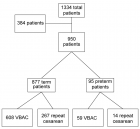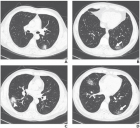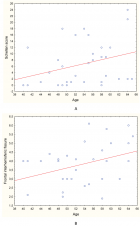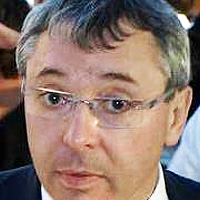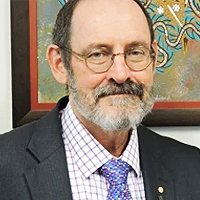Table of Contents
Innovative results in the treatment of inespecific anusitis-proctitis with the use of bergamot gel (Benebeo gel)®
Published on: 27th November, 2019
OCLC Number/Unique Identifier: 9267244218
Inflammation is a complex biological reaction induced by the alteration of tissue homeostasis, which occurs in response to the presence of a biological, chemical or physical agent in the body [1]. The acute inflammatory response is composed of an elaborate cascade of both proinflammatory and anti-inflammatory mediators, and balance between these mediators often determines the outcome after injury [2]. Generally during acute inflammation, cellular and molecular events and interactions reduce the risk of eventual injuries or infections. However, acute inflammation can become chronic, contributing to a variety of chronic inflammatory diseases [3]. Major micro circulatory events that occur during the inflammatory process include changes in vascular permeability, leukocyte recruitment and accumulation, and inflammatory mediator’s release [4].
Proposal for the elimination of allergies
Published on: 11th July, 2019
OCLC Number/Unique Identifier: 8185499410
A man I knew had an extreme allergy to poison ivy when he was a child. When he was about four-teen, he was hanging out with a group of his friends who dared him to eat some poison ivy. He did, and never got poison ivy again. Presumably, the ingestion of the allergen led to the development of immunity.
This might be a pathway to eliminating allergies–ingest the allergen. For example, cutting up poison ivy leaves into small pieces and crushing them with a mortar and pestle should lead to some juice in the mortar. Allow that to evaporate and have a test subject ingest the resultant powder, which, like pollen, etc., could be compressed into a pill. Wait 48 hours, and then see if the subject gets a rash when a small, unimportant area of the body is exposed to poison ivy leaves–and have Ivy-Dry handy. This could be a way to eliminate allergies–ingestion of the allergen.
Altitude sickness and Antarctic polar plateau: A review
Published on: 27th June, 2019
OCLC Number/Unique Identifier: 8172446568
Antarctica is known for its extreme environmental conditions. It is the best model to study multiple stress factors at a time on human physiological responses. Although the coastal Antarctica is on Sea level but the Antarctic plateau or pole at high altitude. Since Antarctica is also becoming tourist site it is pertinent to have a proper understanding of altitude induced illnesses. In this review we have described the human acclimatization process at high altitude of Antarctic polar plateu and South Pole. The review also highlighted the symptoms, clinical features and prevention of altitude induced diseases.
Association of Toll-like receptor 2, 4, and 9 gene polymorphism with high altitude induced thrombosis patients in Indian population
Published on: 8th February, 2019
Venous Thromboembolism (VTE) is a multifactorial disease that is influenced by individual genetic background and various environmental factors, high altitude (HA) being the one. HA exposure may cause release of several damage associated molecular patterns (DAMPs), which act as ligand for various immune receptors. Previous studies on western population involving SNPs analysis of TLRs demonstrated that TLRs are involved in development and progression of several cardiovascular diseases. But, no such study has been done in Indian population in context of HA exposure. TLRs, being receptors play a significant role in manifestation and elimination of diseases by recognition of specific ligands and downstream signal transduction therefore; the genetic variation in TLRs could be implicated for imparting varying response of individuals to discrete diseases.
Therefore, in accordance with it, in present study changes in protein structures of TLR2 and TLR4 due to presence of SNP were accessed by in-silico tools to observe whether the mutation has effect on protein structure and integrity which further influencing its function. The results showed that SNP harbouring protein has decreased functional pockets, thus may be protective for disease. Taking this lead further to genotypic level, first time association between Toll-like receptor genes polymorphism and risk of high altitude induced venous thrombosis is analyzed in Indian population by PCR RFLP method. Though the result showed initial trend that TLR2 and TLR9 SNP are monomrphic in distribution and for TLR4 there was no significant difference in distribution of SNP between healthy and HA-DVT group, these SNPs have potential to be used as susceptibility markers if studied in large population size.
Effect of common food additives on mast cell activation
Published on: 17th January, 2019
OCLC Number/Unique Identifier: 7985982264
Mast cells play a central role in the genesis and modulation of allergic and inflammatory responses. The general aim of the present work was to study the interaction between mast cells and the most common additives approved for use in foods. Dose-response studies about the effect of the main food additives (tartrazine, sodium bisulphite and sodium benzoate) on mast cell degranulation were carried out. Rat peritoneal mast cells were incubated with: 1) buffer solution or 2) stimulus. The stimuli were tartrazine, sodium benzoate, sodium bisulphite and the calcium ionophore A23187. A23187 was used as a reference mast cell secretagogue. Different doses and combinations of food additives were used. The viability of the mast cells was evaluated with trypan blue. In the incubation solutions, the release of β-hexosaminidase was quantified by colorimetric reaction and ELISA plate reader. The remaining β-hexosaminidase concentration (not released) was studied in the cells after the incubations, and morphology of the mast cells was analyzed by light microscopy with toluidine blue stain. The food additives tartrazine, sodium benzoate and sodium bisulphite did not stimulate the release of β-hexosaminidase from mast cells at any of the concentrations used. In contrast, tartrazine at concentrations of 0.1 μM and 1 μM, and sodium benzoate and sodium bisulphite at concentrations of 0.1 μM, 1 μM, 10 μM and 100 μM, significantly inhibited the basal release of β-hexosaminidase from mast cells. Considering these findings, we decided to determine the effect of these additives on the degranulation of mast cells induced by the calcium ionophore A23187. Sodium bisulphite inhibited mast cell activation induced by the calcium ionophore A23187 in this experimental model. The present study demonstrates that food additives of usual permitted use do not stimulate basal degranulation of mast cells in an in vitro model of peritoneal mast cells and that the additive sodium bisulphite inhibit mast cell activation induced by intracellular calcium increase. This food additive could represent an interesting alternative in the prevention of pathologies mediated by mast cells, as well as in the field of nutritional biochemistry.

If you are already a member of our network and need to keep track of any developments regarding a question you have already submitted, click "take me to my Query."







